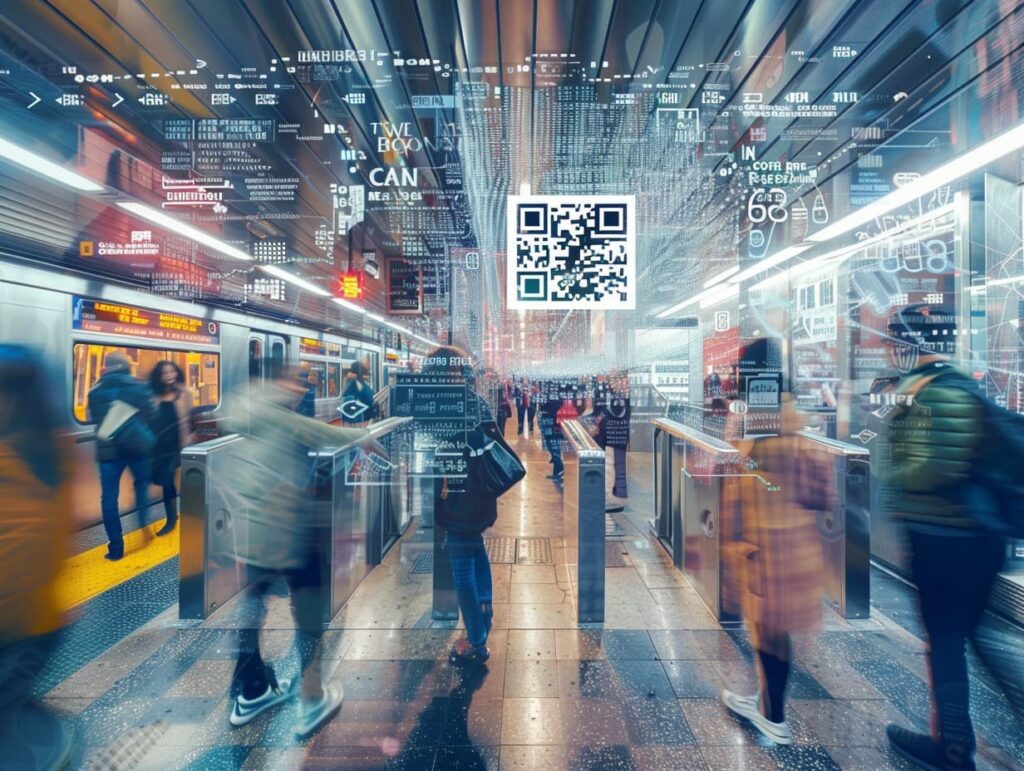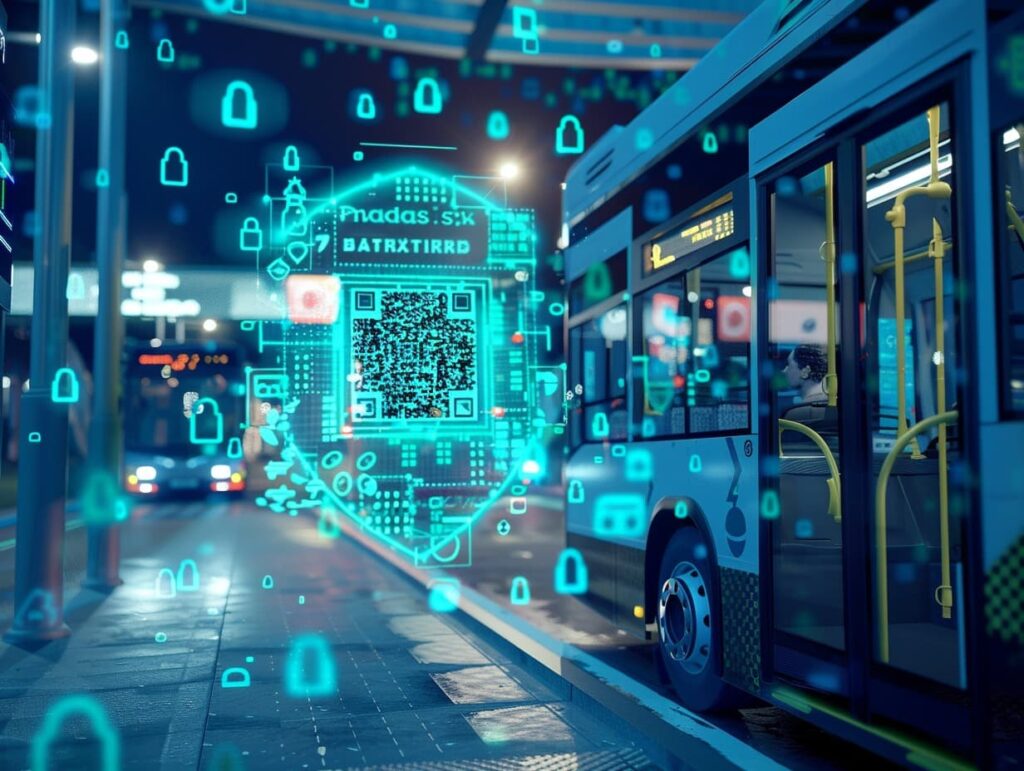QR Code Fare Payment Systems are reshaping the way commuters pay for public transport. A report from Juniper Research found that mobile ticketing users will exceed 1.9 billion by 2023, reflecting a growing trend towards digital fare solutions. Supporting this, QR code payments play a pivotal role, providing a seamless, secure method for transactions on the go.
Overview of QR Code Payment System in Public Transport
The integration of QR codes into public transportation’s payment mechanism marks a significant shift towards digitalization. Commuters enjoy the simplicity of scanning a code to complete their fare payment, eliminating the need for cash or physical tickets. This shift not only improves the commuter experience but also simplifies the operational efficiency of service providers.
The process begins with a QR Code generator, which creates unique codes linked to the fare system. Commuters use their smartphones to scan these codes, initiating a secure payment transaction through a linked mobile application. This method significantly reduces the time spent on fare transactions and minimizes physical contact points, crucial in today’s health-conscious society.

For ease of access, the following points outline the basic steps involved:
- Generation of QR Codes: QR codes are generated using a QR Code Generator like MyQRCode.com, which are then displayed at entry and exit points or on tickets.
- Scanning by Commuters: Commuters scan the QR code using their smartphone, which redirects them to a payment gateway.
- Transaction Completion: The fare is deducted from the commuter’s linked payment method, completing the transaction.
Technical Mechanics Behind QR Code Payments
At its core, the QR code system utilizes encrypted data to ensure secure transactions. Each QR code contains information directed towards a payment gateway, encrypted to safeguard sensitive information. This security measure is crucial, considering the vast amount of transactions processed daily.
Mobile applications play a role in this ecosystem, which scans the QR codes and transports users to transaction pages. They decode the information contained in QR codes, move users to the payment process, and provide a receipt of the transaction to the user. This integration of mobile technology with QR codes enhances the security and convenience of fare payments.
The importance of security in QR code payments cannot be overstated, especially with the increasing prevalence of digital transactions. The system incorporates several security features, including:
- Encryption: To protect data integrity and confidentiality.
- User Authentication: Ensuring that only authorized users can make payments.
- Transaction Verification: Each payment is verified to prevent fraud or misuse.
Benefits of QR Code Fare Payments for Commuters and Service Providers
Commuters benefit greatly from QR code fare payments, enjoying a more streamlined and efficient payment process. This system reduces the need for physical cash, speeds up the boarding process, and provides a safer, contactless payment option. Additionally, it allows for more flexibility in fare structures, including discounts and promotions directly through the app.
Service providers, on the other hand, gain valuable insights into travel patterns and commuter behavior through data collected during transactions. This data can inform improvements in service and operational efficiency. Additionally, the reduction in physical ticketing can lead to cost savings and a lower environmental footprint.
The advantages include:
- For Commuters:
- Reduced transaction times.
- Increased convenience and safety.
- Access to promotions and flexible fare options.
- For Service Providers:
- Operational efficiency.
- Reduced costs associated with physical ticketing.
- Valuable data on commuter patterns.
Comparative Analysis: QR Code Payments vs. Traditional Fare Collection Methods
Comparing QR code payments to traditional fare collection methods highlights several improvements, particularly in efficiency and user experience. Traditional methods often involve longer wait times, higher operational costs, and increased physical contact, which can be mitigated through digital QR code systems.
The environmental impact is also a significant consideration. QR codes reduce the need for paper tickets, contributing to environmental sustainability efforts. Additionally, the ability to dynamically adjust fares and offer promotions through QR codes provides a level of flexibility that traditional methods cannot match.
The key differences include:
- Efficiency and Speed: QR codes significantly reduce transaction times.
- Cost-Effectiveness: Digital transactions lower the cost of fare collection.
- Environmental Impact: Less reliance on physical tickets reduces waste.
Challenges and Solutions in Implementing QR Code Fare Systems

While the benefits are clear, the implementation of QR code fare payment systems faces challenges, such as the need for technological infrastructure and user acceptance. To address these, transit authorities can implement phased rollouts and invest in public education campaigns to familiarize commuters with the new system.
Infrastructure upgrades are essential, requiring significant initial investment but promising long-term efficiencies. Furthermore, ensuring universal accessibility, including for those without smartphones, remains a critical concern that requires innovative solutions.
Addressing these challenges involves:
- Infrastructure Investment: Upfront costs lead to long-term benefits.
- Public Education: Raising awareness and understanding of QR code systems.
- Inclusive Design: Ensuring the system is accessible to all users, regardless of technological capability.
Future of Transportation Payments: The Role of QR Codes
Looking ahead, QR codes are poised to play an increasingly vital role in the evolution of public transportation payments. With advancements in technology, we can anticipate even greater security, convenience, and efficiency in fare transactions. The future might also bring integration with other digital payment methods, offering commuters a truly seamless travel experience.
In sum, QR code fare payment systems represent a significant step forward in public transportation, offering benefits to both commuters and service providers. With ongoing advancements and wider adoption, these systems are set to redefine the commuting experience worldwide.